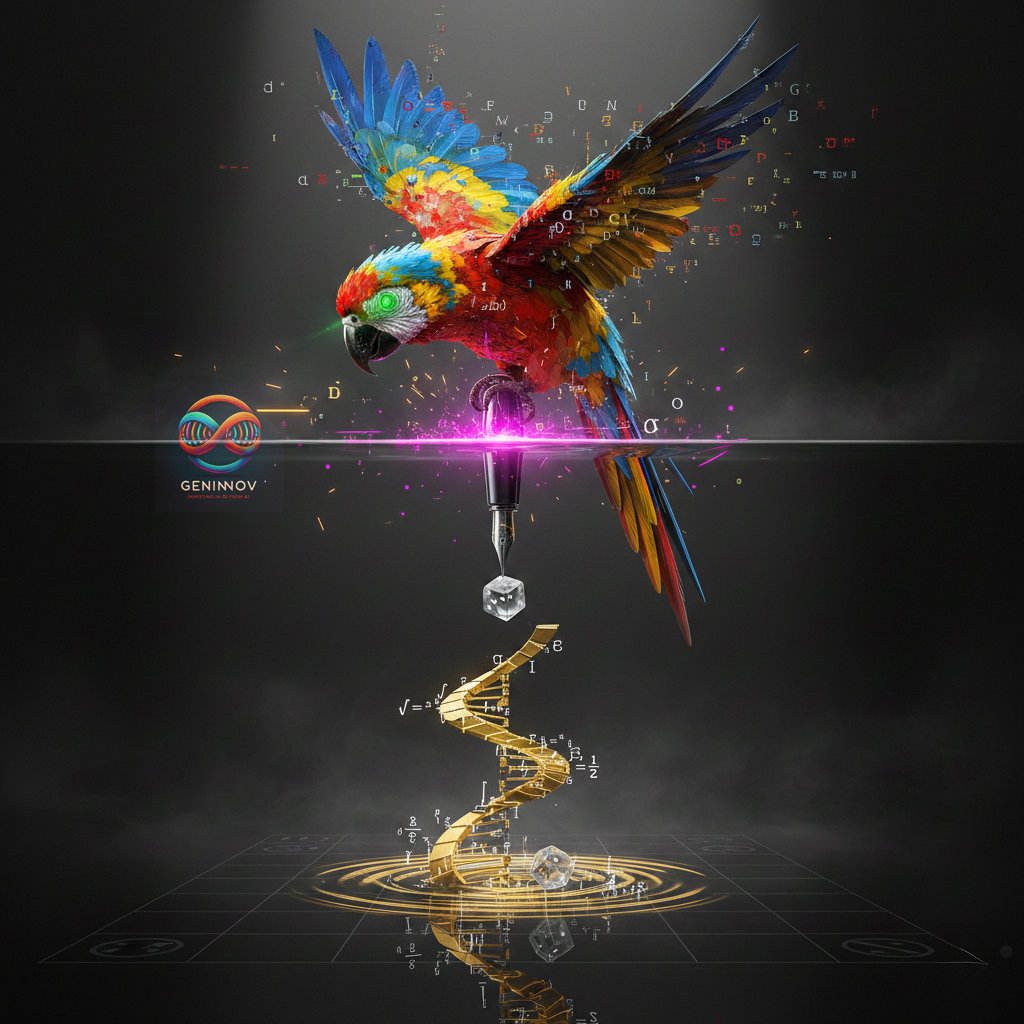In 2018, I wrote a comprehensive review of "The Book of Why" by Judea Pearl, a renowned Turing Award-winning author who collaborated with Dana Mackenzie (https://bit.ly/44sRePX). While I thoroughly enjoyed the book, I found myself disagreeing with certain aspects of the authors' perspectives on causality, particularly their assertion that "causality cannot be factored in by machine learning and big data systems, which undermine the role of human analysis." In my review, I posed a rhetorical question: Can data generate hypotheses better than humans?
My answer, or belief, was captured in "It is true that human intelligence, with the ability to draw intuitive potential relationships, is good at inferring many causal connections...for the book of Why should be causality underlying causality: there must be something in human intuition or intelligence that must be making us somewhat good at detecting causality. If that's the case, why can't we make better causality-detecting machines?"
Fast forward to today, and a research paper published in Nature presents fascinating findings that, if true, have the potential to propel global innovation at an unprecedented pace in the coming decades (paper available at: https://lnkd.in/g9cDk8FJ). Essentially, the paper posits that AI systems that possess human awareness could generate scientifically promising hypotheses that are beyond the scope of human imagination, thus opening up new frontiers of scientific exploration.
This may initially seem like mere theoretical speculation, which it is. Yet, it represents another piece of evidence demonstrating how innovation is likely to accelerate with artificial entities that think like us, except maybe better! The implications of such advancements cannot be overstated, as they have the power to revolutionize various fields and push the boundaries of human knowledge to unimaginable heights in the coming decades.

The Book of Why: The New Science of Cause and Effect by Judea Pearl
My rating: 4 of 5 stars
Here is an excellent book by a renowned expert but potentially with deep fundamental flaws and conclusions. The reviewer is more likely mistaken in these views given that the author is clearly a master thinker on the subject - a point worth noting for any soul wading through this long review. Much of this review is hardly a book review as it is more about the argument gaps this reviewer sees in the author’s epistemological framework rather than the book itself.
Before my disagreements with some of the basic premises mentioned in the book, a few words on the book itself. The author covers a lot of important topics which are barely ever mentioned in popular books.Through confounders, colliders, mediators, the author passionately and patiently explains the nuances of good statistical analysis. The author is a renowned innovator himself: his pioneering ideas have helped many fields because of the work explained here. The book does become too technical at times for non-experts but that only means there is so much more to learn from the text.The arguments below do not mean anything against the details of the causal analysis discussed by the author in the book.
The author makes the following basic points (my words): to believe in any statistical relationship, let’s call it an association or a correlation, there has to be some causal link underlying the two. Determining the exact nature of the causality is the first step before one is able to determine the course of further analysis. Otherwise, the drivers of the associations could be external or spurious, leading to other investigations and analysis. And only human intelligence can unearth these causal links/intentions.
Let’s take these arguments slowly to see the problem with the supremacy accorded to human intelligence and consigning machines to be dumb now and forever. For the book on “why”, the most critical why was never really asked: why this belief that human intelligence has to be the supreme, if not the only one, to understand causality.
Causation is critical to determine - a point well made repeatedly in the book. The author elaborates on many historic and philosophical discussions to conclude why this point is lost on many statisticians and data scientists. Is it?
The author’s criticisms are in two parts although again not his words:
- causality was historically mistreated
- causality cannot be factored in by machine learning, big data systems that undermine human analysis role.
On the first point, there is a lot of straw-man analysis in the early part of book. In the classes where this reviewer learned his statistics in early 1990s and textbooks of 1980s or before, causality was reigning supreme. In basic statistics, any correlations obtained without a good underlying hypothesis explaining the why needed to be binned as a spurious data mined result. The author’s “Do” function is a new tool but in a lot of ways it always existed in the era where the first step before any statistical analysis start was to explain what one was trying to prove through potential causation. Causation was used to strip the data to small number of variables that could be tested in the world without enormous computing power. There must have been dozens of statisticians, as the author avers, who fought against causality in data analysis, and path diagrams etc are new useful tools because of the deeper appreciation of the need of causality, but this reviewer never got the impression in his learning that one could analyse without hypothesis formation and causal arguments before the arrival of Big Data.
One can make this argument more differently beyond or before statistics. Until the recent decades, if not years, human intuition was used to try and explain all sort of dependencies in the world around. Intuition based causality was not only used in theological texts from the days of Adam but even scientific theories were required to pass the tests of intuitive explanations rather than data based dumb equations. Counterfactuals, thought experiments and barebones data were used to create theories as strong as natural evolution and relativity (yes, there was surely a lot of data supporting them when they were discovered, but intuitive/inspirational logic played a huge role in their formation). And, anything that failed the human language explanation - example quantum physics - found a large number of critics over almost a century.
The main first points as shown by our experiences are:
a. Can there be results without hypothesis or causality intuited or explicable to humans?
b. Can data generate hypothesis?” Better than humans?
c. And what is the cost of wrong hypothesis formed by humans versus no hypothesis?
The answer to the first question is a resounding yes. In a way the question should be whether causality is always (versus only - a point explored later) expressible in human language. There is definitely a lot in this world whose explanations do lie within the bounds of what is intelligible in our languages - the famous current examples are quantum physics or working of the DNA at the most fundamental level. The author gives another example - the working of some of the latest AI machines including AlphaGo. With abundance of data and computing power, we have to be ready for times when there will be a lot that will benefit us, run the world around us, but whose complete details we will not understand in our own language. This is a scary prospect, without a doubt, but also inevitable. We must also remember that there are causal explanations we simply cannot express in our common languages including in math that is legible to us.
Before we discuss men versus machines, it is perhaps the time to understand what causality means! The author rightly balks at defining Causality (any reductive explanation takes away something from the true meaning, as per the author). This reviewer would still go ahead with the following working definition to explain some of the issues with the conclusions on machines reached by the author: causality - the way this reviewer sees it explained in the book - is a priori, human intuited and human language explained possible relationship (a hypothesis) between independent and dependent variables with each clearly defined.
It is true that human intelligence, with the ability to draw intuitive potential relationships, is good at inferring many causal connections, this intelligence is far more fallible - as our religious and political history from time immemorial is witness - than otherwise. Our intelligence is neither objective nor prone to agreements at the end of every path diagram and statistical result sets. Most importantly for the book of Why should be causality underlying causality: there must be something in human intuition or intelligence that must be making us somewhat good at detecting causality. If that’s the case, why can’t we make a better causality detecting machines?
The author makes “machine learning” far more dumber than it is in 2018. There are no specific restrictions what machine learning constitutes: machines can easily be modified, and indeed they are, to test causal hypothesis by running controlled experiments (intervention) for instance. Machines could be programmed to analyse counterfactuals or even test thousands of different path diagrams and causal paths to detect those that make the most sense. In a world where the number of variables analysed are no longer just a handful, it is inconceivable for human intelligence to draw a causal path the traditional way shown in the book except in extremely simplistic situations.
One critical concept the author misses is that of starting with wrong hypothesis or potential causality. In some cases, like in textbooks, this is not a worry as a wrong hypothesis would be proven wrong with data thus adding to our knowledge. In real life statistics, data itself is neither complete nor representative in most cases. What one picks and analyses is often a function of what one is set out to prove. Numerous tools provided by statistical sciences, including some explained in the book, only add to the degrees of freedom a human engineer has in conducting analysis. A wrong causal start, in human worlds, could lead to centuries of agony given the circular loops that exist.
The machines, in their dispassionate ways, could do better by simultaneously evaluating multiple paths at least in numerous cases if not all. Plus human intuition and intelligence are relatively invariant while machines are improving exponentially.
Historically, humans developed intuitive rationale and data came much later in our development only in the last few decades. Supremacy of intuition that has been valid for millennia but this is no longer the case. Living in a world where we do not fully fathom - in our language - machines created by us is scary but this is exactly what is going on forever: us trying to figure out the machine called the world. As man-made machines gallop further, we will need to look at our races’ self-interests but this will need to start with us knowing our limitations.
View all my reviews



